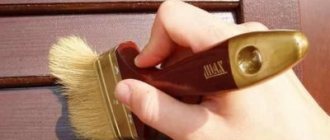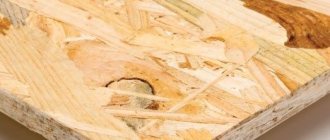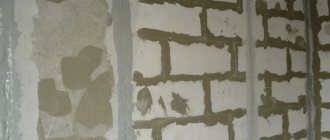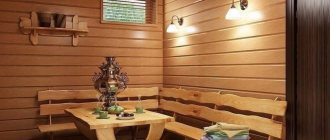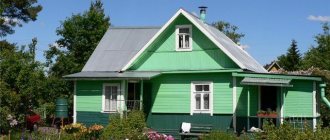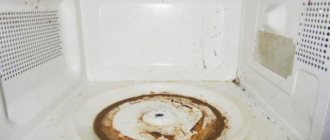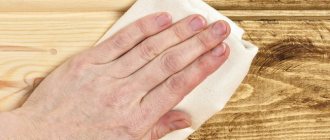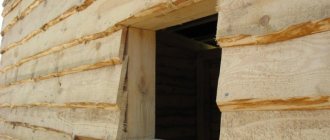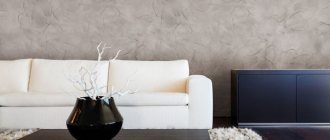Wooden lining is a beautiful, natural material. It is not surprising that so many users around the world prefer it as a finishing and facing material.
The environmental friendliness and natural beauty of wood not only decorates the room, but also creates a certain microclimate in it. And the lining covered with a thick coating (paint, varnish) allows you to create any decor.
But wood has a significant disadvantage that affects the performance characteristics of the lining - it is subject to rotting, various damage, and also tends to darken.
This article is intended for those who want to protect and at the same time preserve the lining in its natural form. Let's consider step by step how and what is the best way to coat (impregnate, treat, paint) wooden lining (euro lining).
I must say that the “take a brush, paint and paint” method is good precisely because of its simplicity. But how long will wood painted this way last? Wouldn't it be better to take a more thorough and correct approach?
Proper painting of wooden lining consists of 4 stages:
Tips for choosing a finishing coating for wooden lining
- color . Since stain or paint changes the color or shade of the lining, you need to use this property. For example, light shades visually increase the space. The use of different colors/shades allows you to zone the room;
- compound . The prefix “bio” after the name of the varnish indicates the absence of harmful substances. This composition can be used for interior work;
- manufacturer . Many domestic analogues of lining varnish or paint can create worthy competition for foreign goods. At the same time, the price of the product will be more humane.
How and with what to paint the lining in the bathhouse and steam room
Wax composition Evrotex-Sauna for lining in a bathhouse Due to the high temperature, it is better not to paint the lining in a bathhouse, but to treat it with protective compounds.
An excellent solution would be to use wax compounds, for example, Evrotex-Sauna. This coating is suitable for use in conditions of high temperature and cyclic intensive humidification.
Advice. You only need to apply the varnish once in the sauna. In the dressing room - you can make several layers.
How and with what to paint the lining on the veranda
The veranda or terrace is exposed to the greatest influence of atmospheric factors, so the material must be resistant. First coat with a layer of primer, and then 2-3 layers of varnish or paint.
How and with what to paint the lining inside/outside the house
There are no particular differences in painting a house outside or inside. The only difference is in the coatings used. Varnish/paint for interior work must meet environmentally friendly requirements. For outdoor work, it is more important that the coating can withstand moisture, temperature changes, and exposure to UV rays. The same type of paint can be used inside and outside a building. The difference is in the number of layers applied.
How to paint lining correctly - tool
To paint the lining you can use:
- brush. They are convenient because they allow you to paint wood in corners and hard-to-reach places. The paint is applied most evenly with a brush;
Advice. To apply the paint with a brush evenly and avoid smudges, you need to immerse the brush halfway in the paint.
- roller Allows you to paint quickly. However, to obtain a uniform layer you need to paint several times;
- spray. Allows you to get the job done as quickly as possible. But it increases paint consumption;
- mitten (chain-shaped). It is convenient to use a glove to paint (impregnate) the places where the lining joins (frames) the pipes;
- foam sponge.
Types of paints and varnishes
All compositions for painting or coating wood lining can be divided into several types:
- Protective mixtures;
- Clear varnishes;
- Colored paints.
Depending on the purpose of the room, type, type of lining, it is necessary to cover the slats with different types of compositions. Combining the right mixtures will extend the life of the wooden covering and set the desired design for the entire room.
Protective mixtures
This type of material includes a variety of primers and compounds that increase the survivability of wood and create a protective film against the negative influence of the environment.
Water based primer
The first mandatory layer of wood coating. The primer penetrates deep into the fibers and ensures good adhesion of subsequent layers to the material. The primer is sold in small plastic containers with a capacity of several liters. The primer can be applied either with a roller or with a brush. For better impregnation, the primer is applied to the lamellas before direct installation.
Antiseptics, antifungal, bactericidal mixtures
These compounds prevent the process of rotting inside the wood fibers. They are often included in the primer or applied to the slats at the factory. Long-term storage of lining that is not covered with such a composition can lead to rapid rotting and a decrease in overall density.
They are a water-based liquid substance.
Often the primer includes a certain percentage of such substances, so before purchasing and applying it is worth reading the product data sheet to check for the compositions already applied, and choosing a suitable primer.
Antipyrines
A rare type of materials that include di-ammonium, the gases of which do not support combustion. Antipyrine treatment of lining is mandatory for rooms with open fire (kitchen, smoking area, exterior decoration of the house). Fire retardants are applied with a brush or spray onto the primer. When ordering a certain type of lining from a warehouse, it is possible to order the wood to be impregnated with fire retardant in hot baths, which will significantly increase the resistance of the lining to fire.
Preservatives (combined formulations)
They represent universal protection against various environmental influences on wood. These are powerful compounds that are used to protect expensive premium class lining.
Stains
A special paint that saturates the top layer of wood, giving it a pleasant shade.
At the same time, the stain creates a thin film on the surface, which protects the wood from moisture, dirt, and allows the wood to be washed with soap-based products.
Clear varnishes
How to paint wooden lining indoors to preserve the natural texture of wood? Of course, with colorless paint.
After treating the wood with protective compounds, it’s time to decorate. It all depends on the customer and the chosen type of interior. As a rule, colorless varnishes and mixtures are used to cover expensive linings, which can give the finish a matte, semi-matte or glossy texture, but will not hide the natural grain of the wood.
Clear varnishes come in several types:
- Water-based acrylic varnishes create a beautiful glossy finish on wood without hiding the natural pattern. Acrylic varnishes are one of the most preferred paints due to their low cost. You can coat the wood with varnish using a brush or roller. You can work on already installed lining, on which protective layers have been applied.
- Acrylic varnish does not burn, this coating can be washed with soap and alcohol, and its service life is more than 5 years. Re-painting with acrylic varnish is quite simple: you can remove the previous layer with special removers. A quick sanding will ensure that the new layer adheres well.
Lining made of any wood absorbs varnish well, so you can choose from a wide range of manufacturers.
The situation is different with yacht varnish - the composition darkens the wood, but at the same time leaves a natural pattern. This is an expensive type of material that is characterized by quick drying, long service life and a high degree of protection from moisture, UV rays, and temperature changes.
If you were looking for an answer to the question of how to paint the lining in order to change the texture to a glossy one and preserve the natural pattern, the answer is only with colorless water-based varnishes.
Wood paneling painting technology
- Before painting or applying varnish/paint, they must be mixed well. This way they will lie more evenly;
- a test paint will allow you to understand what the painted surface will look like;
- It is better to apply the paint in several thin layers. This way, each layer will dry faster and the coating will be applied more evenly;
- the next layer of paint/varnish should be applied only after the first one has completely dried;
- When painting the lining, you need to leave gaps of 2-3 cm at the top and bottom of the panels. This will allow the tree to breathe. And the gaps themselves can be closed with decorative plinths;
- to avoid obtaining different shades of wood, it is better to paint with paint at a time, using material from one batch;
- if there is a need to interrupt work, try to make sure that the “seam”, the border of the painted and unpainted area, is not in a visible place;
Tips for storing an open can of paint:
If work is interrupted for a long time, then in order to prevent a film from appearing on the surface of the paint, you can put cardboard impregnated with drying oil on the surface.
If a film appears, its particles may fall on the surface to be painted. In this case, it is better to cover the surface with foam rubber and dip the brush through it.
- a more saturated color/shade can be obtained if you apply the paint several times (up to 4). Further increasing the number of layers will have no effect;
- Do not allow paint/varnish to dry too quickly. This may cause the painted layer to crack. Professionals do not recommend applying paint/varnish in direct sunlight.
An example of choosing paints and compositions for wood lining
Shtil lining made of hardwood (oak), installed on the walls in a teenager’s bedroom.
The first layer of coating is a water-based primer with the addition of an antiseptic; this stage must be completed before finishing work begins. The board dries in the same room where the repairs are made.
After installing the lining, connecting electricity, and heating, the grinding process begins. Sanding the walls will allow the paint to set faster and penetrate deeper into the fibers of dense wood.
Acrylic varnish with the addition of an arbitrary color (for example, light green). Painting in 3 passes using a spray gun. Complete drying of the layer occurs in 5-6 hours, so all work can be completed in 2 working days. Paint is applied continuously, from top to bottom, from left to right.
Shtil lining has no joints and no visible part of the lock. Acrylic paint will provide good protection against moisture and UV rays. Repeated painting is required to ensure that the paint adheres well to the wood. Also, if it is necessary to “darken” the lining - to make it a darker shade - an additional layer of paint is applied.
Facade preparation
Before painting the lining on the facade of the house, you should carry out several procedures that will have a positive effect on the final result.
- All dust and various decorative elements are removed from the surface: trim, shutters and others.
- All infected and heavily contaminated areas are treated with special solutions that prevent further development of microorganisms.
- All cracks, seams, and joints of building materials are sealed.
- Dry wet wood: if moisture remains, it will adversely affect the facade of the house over time.
If you decide to apply new paint to the old one, which is undesirable, you can resort to several methods. The three methods described below will help you how to repaint the lining efficiently and for a long time.
Important! First check the quality of the old paint; if it falls off in places, it is better to remove it everywhere.
- Prime the surface. Using a primer solution and drying oil you can achieve a good result. Thus, it is easy to level the surface and protect yourself from the appearance of fungal deposits.
- Sand the lining so that virtually no old paint remains on its surface.
In this case, it will be enough to go through it thoroughly with sandpaper, then remove the dust and the surface is ready for painting.
- Degrease the surface with alcohol or a weak solvent, let it dry and then coat it with lining paint. The simplest method, which is useful for utility rooms: the paint will last 3-4 years.
If you are tormented by the question of how to paint varnished lining, then you can resort to the services of special products, however, this is an extra cost. Therefore, if you have a limited budget, it is better to sand and remove the old finishing material and apply a new one.
It is also advisable to degrease and remove dust from a new house - the paint will adhere better
